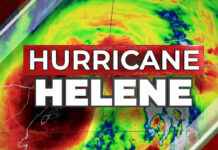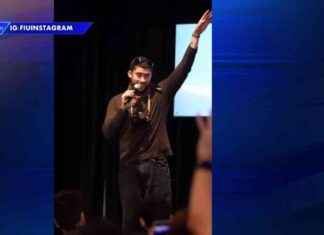When Los Aurora took flight five years ago they were branded as doing flamenco-jazz. The quintet that emerged from the quarry of the Taller de Músics left its sound identity traces on the album Aurora, a work as a tribute to the work of Falla. The album moved in those waters, but their live shows immediately showed them as a powerful quintet, sonically trans-stylistic and with a very attractive and unusual proposal.
Pere Martínez (singing), Max Villavecchia (keyboards), Javi Garrabella (bass), Joan Carles Marí (drums) and Pol Jiménez (dance) immediately left their artistic mark on stages here and halfway around the planet, until the pandemic stopped them all. That allowed them to shape new compositions that have ended up giving life to the self-published album La balsa de la medusa, which will be released next Monday.
Although it seems like a minor issue, it is striking that it is published on a Monday, when it is usual for Friday to be the date chosen to publish albums. Garrabella explains that “everyone now tells you that the more you take it out at the beginning of the week, the better. Especially the people who run digital marketing tell you, who claim to have studied that when people listen to music the most is during the week, when he goes to work and in the mornings. And that on the weekend they forget everything”.
An aside, the very next album is a record that better reflects their quintessence as a group (the previous one was still a commission), with a more energetic and electric sound close to rock and touches of electronics, as well as flamenco and jazz. And with collaborations from Niño de Elche, Chicuelo, Mario Mas and Tarta Relena.
Garrabella has no hesitation in qualifying this Raft as sonically more audacious. “Yes. Two things have happened. The first project-album was at first a commission that the Auditori made us to honor Falla for his anniversary. And we devised it before doing it. Then, as we did it and we were giving many concerts and noticing the strength that came out of the cante and the baile that we saw that asked us to play more aggressively.Then the sound evolved through the live shows and there came a time when we said that it could not be just another sound classical or natural as is done in jazz or flamenco, but it needed more power like that of rock. On the other hand, the fact that these are our compositions means that something more daring has come out. Because it is more daring to create than to copy , because whenever you create something new comes out.
A work that they already advanced a few months ago at the Ciutat Flamenco festival, and that they will explain today in the Laut room (7 pm), with a previous colloquium and a subsequent performance. Max Villavecchia and Javi Garrabella are the musical and lyrical composers, respectively, from whom the rest of the group works, especially singer Pere Martínez, one of the combo’s indisputable references. Garabella specifies that “on this album everything is her own compositions except for an arrangement of a Chopin nocturne and a Falla theme, Fantasia bética”.
The lyrics are poems and foreign fragments, in some cases adapted, and end up shaping a thematic thread that symbolizes the painting by Théodore Géricault on the album cover.
The bassist explains that the composer Enric Palomar gave him the idea, “the idea of ??an oppressed people and a captain who steers the ship, but who is inept and who leads it to decadence, to disaster”. For his part, Villavecchia confesses that “in my case I am guided by a more intuitive than intellectual criterion. It has to do with the dark, the oneiric, flamenco. The initial idea was the night, then the most tragic side appeared with the story of the jellyfish and at the end there is like more light”.
And this conveyed by a torrent of music, difficult to categorize. Max Villavecchia believes that “if I had to say an adjective, I would say experimental flamenco, but it also has jazz, flamenco, rock, synthesizer effects. I don’t know, I would say modern contemporary music”.
Garrabella, for her part, believes “that you have to make a list of ingredients: what flamenco does have is singing and dancing, because those who sing and dance follow the line of traditional flamenco; thus, we use some flamenco palos, but not in the traditional way. Then we use jazz harmonies that are contemporary; in some songs there is some pop structure, and the sound in general is quite rocker”.
Despite this sound evolution, or independently of it, the type of public that usually goes to his concerts is symptomatic. In this sense, Garrabella assures that “the feeling is that a large part of the public that comes is people between 50 and 60 years old, who have a taste for culture, for poetry, and who recognize what we are talking about and the musical influences Because just like someone of our age or younger, you talk about Lorca or Falla and it seems very old to them.” His bandmate prefers to clarify when he says that “I would say that it is a broader public, there are also people in their 30s and 40s. And it also has to do with the sound of the first album. I think that now, with the new one, it will rejuvenate “.
A proposal like yours, unusual, has its pros and cons, among other things that they are hired much more abroad than in Catalonia. “We don’t know the clear reasons either –reflects the bassist-lyricist–, but in general, the circuits where we’ve moved the most have been world music and jazz festivals, and not so much flamenco”.
And Villavecchia adds: “Here I see that there is a lot of desire for this type of thing to go ahead; there are many musicians and proposals, and the most varied would simply have to be normalized. That there is more space and proposals that investigate, more contemporary music, things that move away from clichés, are valued”.








